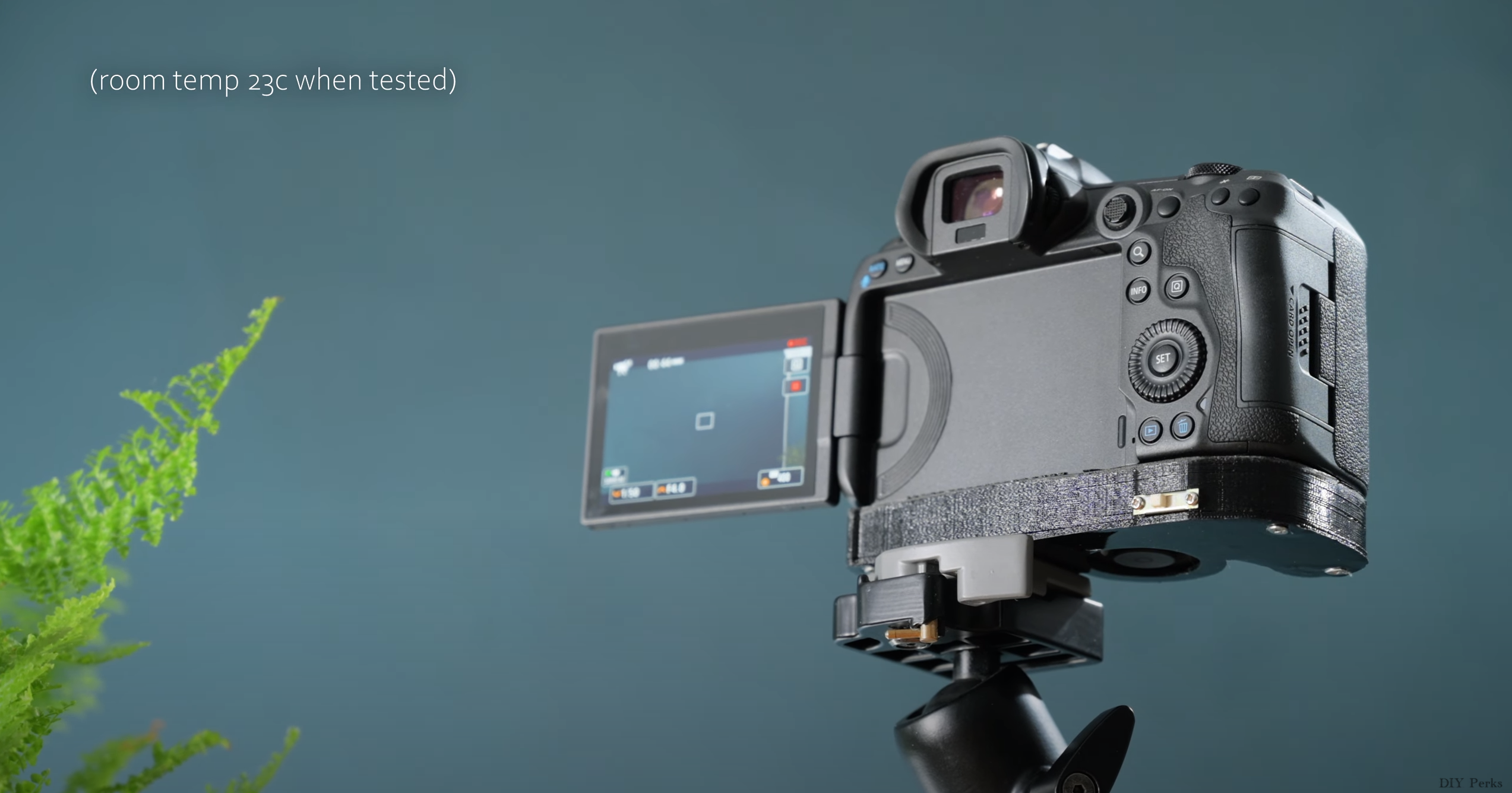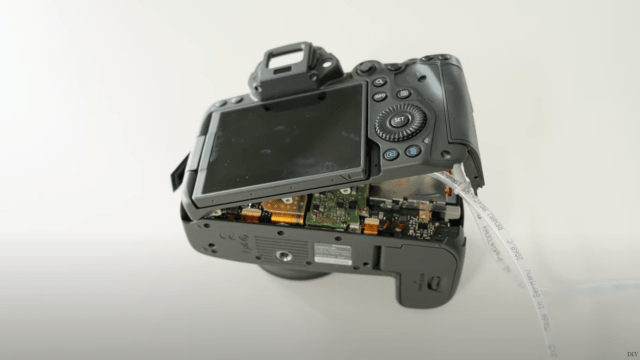The Canon R5 is a seriously impressive camera and one of the cheapest mirrorless cameras you can buy that supports full 8K video capture. Unfortunately, those fancy video capabilities come with a serious drawback: major overheating issues. So to address the R5’s limitations, YouTuber Matt Perks created a custom cooling solution to seriously upgrade the Canon R5’s max recording times.
When it first went on sale, the R5 (which sells for just under $US4,000 ($5,420) body only) came with a hard 20-minute recording limit imposed by Canon for 8K video capture. And with a design that often sees components surrounding its processor reach temperatures of 82 degrees Celsius or more during normal use, after you hit the camera’s 20-minute recording limit, it can take up to two hours for the camera to cool down before being usable again.
After taking his Canon R5 apart, Matt Perks of the DIY Perks YouTube channel discovered one of the big reasons for the R5’s overheating issues is caused by a heatsink that’s attached to a processor by two thermal pads that don’t even fully cover the chip, resulting in rather poor thermal conductivity and cooling. So to fix this, Perks created his own custom water-cooling rig for the R5 made from a copper heatsink installed with a fresh layer of thermal paste, that was then connected to a pair of small water blocks attached to larger external radiator and reservoir.
Unfortunately, due to Canon’s hard 20-minute video recording limit, even after Perks’ new water-cooling system was installed, the R5 still shut down automatically around the 20-minute mark even though data from a thermal camera show temps of less than 40 degrees Celsius. Thankfully, following user complaints, Canon released new firmware for the R5 (version 1.1.1) that got rid of the arbitrary 20-minute recording cap in favour of a new temperature-based overheating detecting. And voila, after Perks updated his R5 with the new firmware, he found that with his water-cooling system, his Canon R5 was able to record 8K video for more than fours without stopping.
[referenced id=”1229706″ url=”https://gizmodo.com.au/2020/07/the-eos-r5-looks-like-the-beastly-full-frame-mirrorless-cam-that-canon-fans-wanted-all-along/” thumb=”https://gizmodo.com.au/wp-content/uploads/2020/07/10/eatmeqphgjqsozuwll57-300×168.jpg” title=”The EOS R5 Looks Like the Beastly Full-Frame Mirrorless Cam That Canon Fans Wanted All Along” excerpt=”Canon has taken a somewhat winding route with its full-frame mirrorless camera line, starting with the mid-range EOS R in 2018 before following that up with the entry-level EOS RP in 2019. But now, Canon has finally launched the new EOS R5, which looks like the high-end flagship mirrorless camera…”]
However, as impressive as his results were using the water-cooling system, it’s not exactly a practical solution, as the tubes and water blocks Perks used made handling and operating the camera quite difficult. So as a middle ground solution between maximum cooling and usability, Perks created a second custom copper heatsink that extended the R5’s stock 4K video recording time from 26 minutes to 39 minutes of continuous use. But perhaps the biggest improvement is that with his new copper heatsink, Perks says the R5 only needs to wait around five minutes after overheating to be able to record video again, a massive improvement from the two hour wait times of a stock Canon R5.

But let’s not forget that Perks original goal was unlimited recording time. So after installing his customer copper heatsink, Perks designed a new battery-powered fan accessory that can be attached to the bottom of the camera to blow air and draw heat away from the camera’s body and interior heatsink, which provides enough cooling to allow the R5 to record video indefinitely. And thanks to the fan’s custom 3D-printed mount, Perks’ add-on can be connected and removed quickly and easily depending on your needs.
While all the steps needed to combat the R5’s overheating issues might be a bit too complicated for your typical camera user, Perk’s DIY solution is still an impressive example of what can be accomplished by (expertly) tinkering with your gadgets. And here’s hoping he will release a file for his 3D printed base so some other enterprising R5 owners can upgrade their cameras too.
